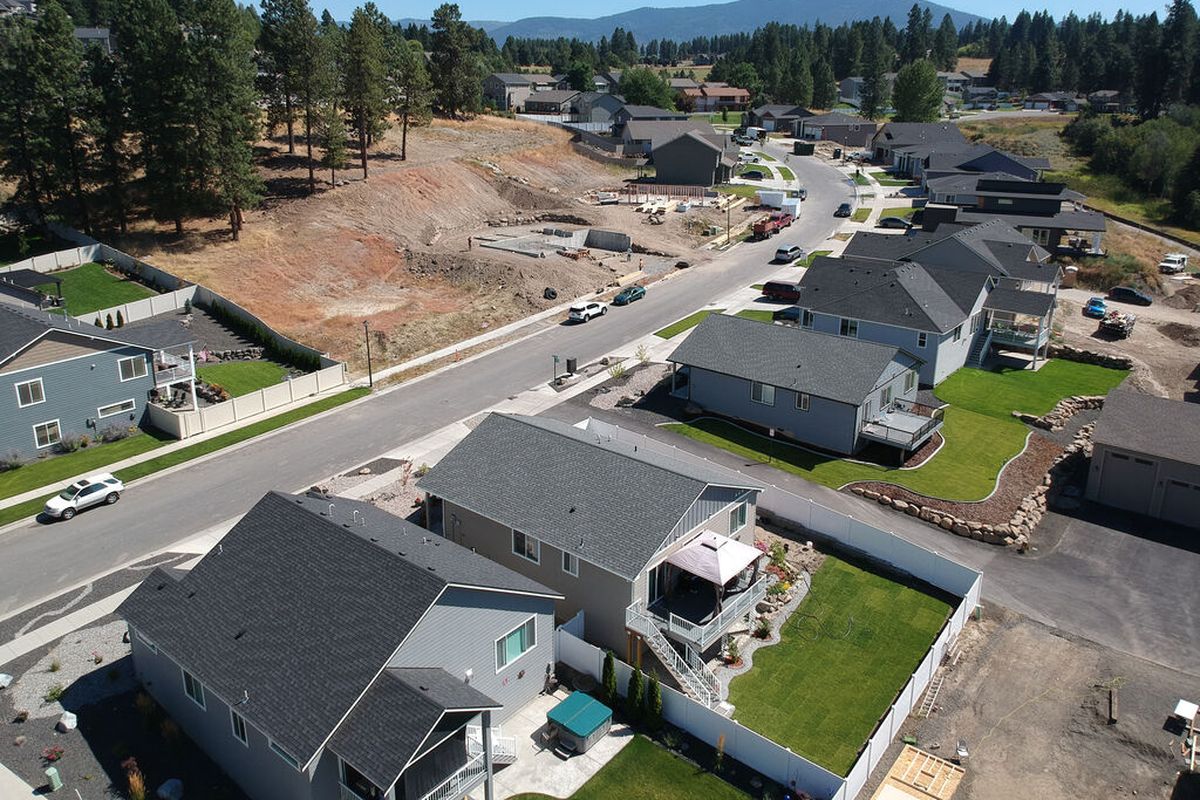Spokane’s housing market predicted to thrive post-COVID-19, housing experts say

Real estate experts predict the Spokane area will be one of the nation’s top-performing housing markets post-COVID-19.
Spokane is among 10 metro areas nationwide that have shown resilience during the pandemic. That momentum is likely to continue for the next two years, Lawrence Yun, chief economist for the National Association of Realtors, said at a virtual event Thursday for the nation’s Realtors.
“Some markets have been performing exceptionally well throughout the pandemic, and they’ll likely carry that momentum well into 2021 and beyond because of strong in-migration of new residents, faster local job market recoveries and environments conducive to work-from-home arrangements and other factors,” Yun said in a statement released during the event.
The Spokane metro area stood out as having the greatest percentage of people – 23.8% – moving from West Coast areas in 2018. It’s the third-most attractive destination for West Coast movers, following Phoenix and Dallas, according to the national association.
Although Spokane had the highest unemployment rate of the 10 metro areas – at 8.6% in September – it’s likely to see economic and workforce growth because of out-of-state migration from expensive West Coast cities.
Additionally, Spokane could attract more technology workers, some of whom work for companies with flexible and permanent work-from-home policies. Nearly 7.2% of Spokane’s labor force worked from home in 2019, according to the Realtor’s association.
While NAR’s announcement is favorable for Spokane’s housing market, it didn’t come as a surprise, as the area has been experiencing growth and gaining national attention for years, said Tom Clark, president of the Spokane Association of Realtors:
“A designation from the NAR or an independent national study is not going to change what we already know – it’s challenging for buyers and it’s an incredible sellers’ market.”
In July, the county’s median closing home price exceeded $300,000 for the first time in history.
Zillow has named Spokane as a midsize housing market to watch in 2020, while Wallethub.com ranked Spokane Valley eighth out of 300 cities nationwide on its list of the best real estate markets of 2020.
Slim supply still driving price
Spokane County’s median closing price was $309,500 in November, a 16.8% increase from $265,000 in November 2019, according to the Spokane Association of Realtors.
The number of home sales in Spokane County increased 11.7% last month, compared with November 2019. Some 687 single-family homes and condominiums on 1 acre sold in November, compared with 615 homes in November 2019, according to the association.
The county’s shortage of housing inventory persisted in November, dropping to a two-week supply with 335 properties on the market.
For comparison, inventory was at 1.2 months in November 2019. A healthy housing market typically contains six months of supply.
Clark said a multitude of factors contribute to the county’s lack of inventory. Sellers are holding onto their homes because they are unable to find and move to another property, while some homebuyers are struggling with finding homes in their price range.
“As a community and region, we need to take a real serious look at the lack of available housing right now at all price points,” Clark said. “Just about every price range is experiencing a shortage.”
He said elected officials need to take a multiphased approach to address the area’s housing shortage by increasing awareness for careers in skilled trades, examining where they can expand the Urban Growth Boundary and relaxing some codes and regulations so contractors can build single-family homes at an affordable price, among other things.
Yun, of the NAR, said lack of inventory is the reason why home prices are increasing nationwide.
“At some point, if the home prices continue to outpace people’s income growth, then we will run into affordability challenges, especially if the mortgage rate no longer declines,” he said.
The top 10 markets
The postpandemic economic rebound, improving job conditions and stable interest rates are expected to continue into 2021, the NAR said, citing a survey of more than 20 top U.S. economic and housing experts.
The NAR predicts the annual median home price nationwide will increase by 8% and an average annual 30-year fixed mortgage rate will hover around 3% in 2021.
Other metro areas on NAR’s list of top-performing markets include Atlanta-Sandy Springs-Alpharetta, Georgia; Boise; Charleston, South Carolina; Dallas-Fort Worth-Arlington, Texas; Des Moines, Iowa; Indianapolis; Madison, Wisconsin; Phoenix; and Provo, Utah.
The NAR identified the top 10 metro areas by considering a variety of factors it views as influential to a city’s recovery and growth after COVID-19: unemployment rate; domestic migration; share of workers in retail trade, leisure and hospitality industries; mobility to retail and leisure places; and the fraction of the workforce working from home.
“As we look toward 2021 and beyond, expect these 10 markets to perform strongly with potential buyers finding conditions particularly favorable to purchase a home,” NAR President Charlie Oppler, a Realtor from Franklin Lakes, New Jersey, and the CEO of Prominent Properties Sotheby’s International Realty, said in a statement.
“Overall, residential real estate will continue to be an important driver of our nation’s economic recovery and the activity in these markets will help lead the way.”